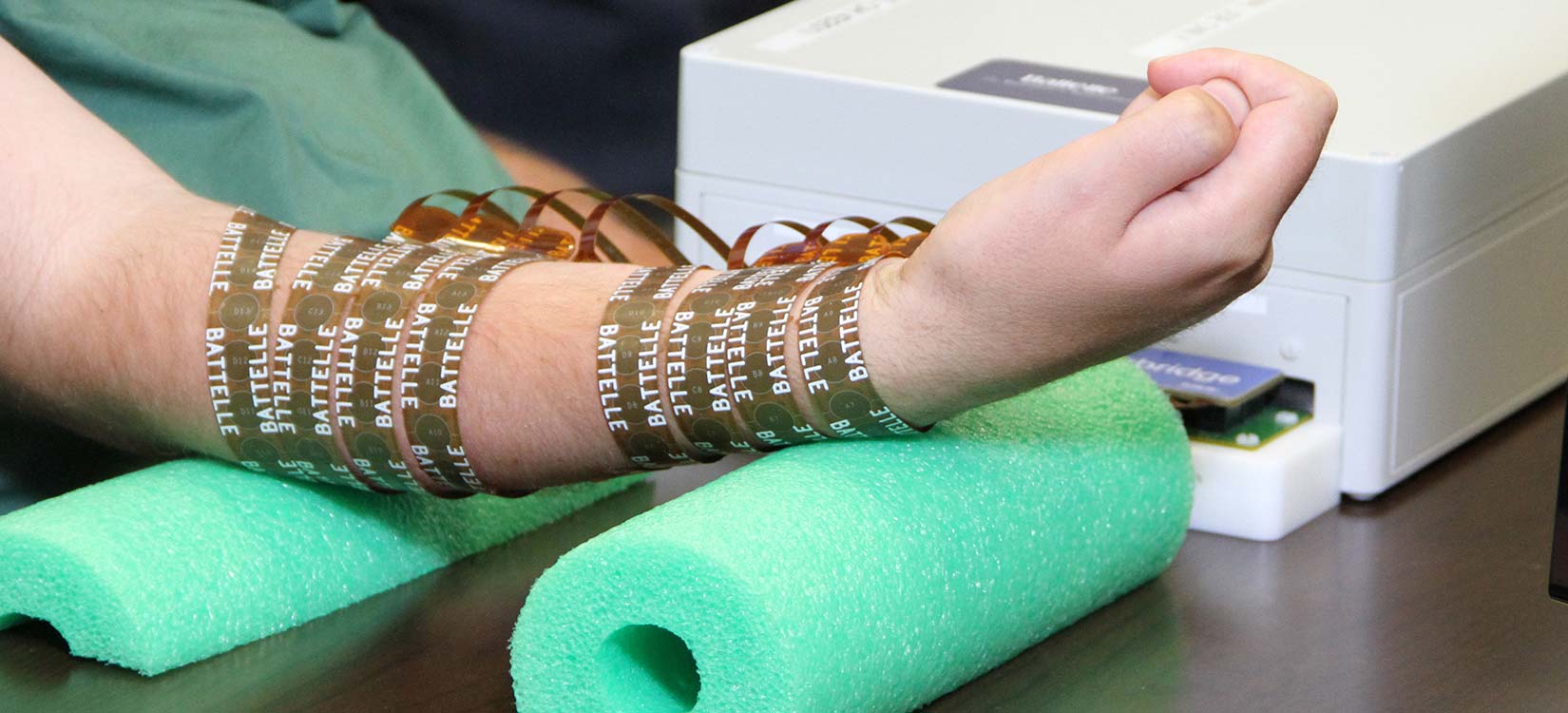Neuroprosthetics make Ian Burkhart the first person to move a paralyzed limb with the power of thought

For the first time ever, a paralyzed man was able to move his fingers and hand with his own thoughts as a result of collaboration between The Ohio State University Wexner Medical Center and Battelle. Ian Burkhart, a 23-year-old tetraplegic patient, demonstrated the ability to use a neuroprosthetic brain implant system to intentionally move his hand and wrist. The implant, a 96-electrode array, was surgically placed on his motor cortex by Ohio State's Ali Rezai, MD.
In 2012, Chad Bouton and his Battelle team began collaborating with Rezai and fellow Ohio State neuroscience researcher and clinician Jerry Mysiw, MD, to design the clinical trials and validate the feasibility of using the technology in patients.
Bouton and his team built the multichannel stimulator relayed signals to nerves in the patient's arm governing muscle control. Neural activity detected by the cortical array was processed by Battelle's algorithms and encoded patterns sent to the stimulator to activate muscles. The demonstration showed the system could bypass the injury in the spinal cord and link brain activity in his motor cortex to voluntary muscle activity in his arm, hand and wrist, so that he was able to make voluntary motions in real time with high accuracy.
Burkhart spent seven months with the research team, who collected 300 hours of data in developing their custom algorithm. The study protocol has been approved for up to five participants.

